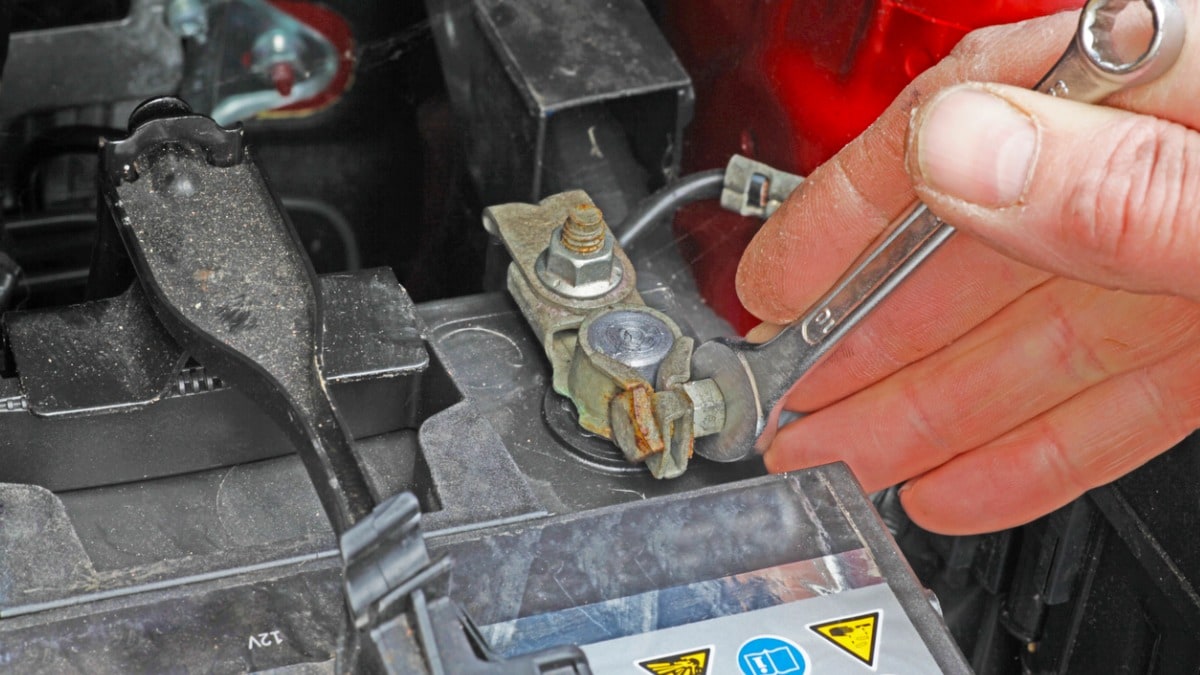Disconnecting a car battery is a straightforward task requiring careful attention to the proper procedure and safety precautions. Read on to learn how to safely disconnect your battery and get answers to questions you might have when preparing to service the vehicle or install a new battery.
Safety Precautions and Tools
Physical injury is possible when working with car batteries. Take simple steps to prevent hurting yourself.
- Wear safety glasses and gloves to protect against acid and electrical hazards.
- Remove any metal jewelry to prevent accidental short circuits.
- Lift cautiously and avoid straining yourself when lifting the battery, which can weigh nearly 50 pounds.
A wrench set, socket set, or adjustable wrench is needed to loosen the bolts connecting the battery cables. Many clamps have 10-millimeter bolts, but there is no auto industry standard. Be prepared with a wrench set, socket set, or adjustable wrench to loosen the clamps.
Steps To Disconnect Car Battery
Disconnecting and reconnecting a battery incorrectly can lead to blown fuses, permanent battery damage, or ruin the car’s onboard computers.
- Turn off the vehicle and ensure the ignition is in the OFF position. Note: ACC or ON without the engine running is not good enough. Turn the ignition OFF before removing the battery connections.
- Locate the battery, which typically is under the hood on either side of the engine bay. Check the owner’s manual if the battery location is not obvious.
- Identify the terminals. The positive terminal is usually marked with a plus (+) sign and may have a red cover. The negative terminal has a minus (-) sign and often has a black cover.
- Disconnect the negative terminal first. Use a wrench and turn counterclockwise to loosen the nut or bolt on the negative terminal and remove the cable. Disconnecting the negative terminal first minimizes the risk of a short circuit by reducing the chance of the wrench touching both the battery terminal and the car’s body simultaneously.
- Disconnect the positive terminal. Follow the same process as with the negative terminal.
- Secure the cables. Ensure that the disconnected cables are secured away from the battery to prevent accidental contact.
Reconnecting the Battery
Disconnecting and connecting a car battery has risks, including electrical shock, short circuits, and damage to the vehicle’s electrical system if not done correctly. When reconnecting, follow the disconnection steps in reverse order.
- Reconnect the positive terminal first, followed by the negative terminal.
- Tighten the terminals securely to ensure a good connection.
MORE: Is My Car Battery Dead?
Additional Considerations
When you disconnect the battery, you can reset the car’s computer and clear error codes. However, it may also reset other systems, requiring you to set the clock or reprogram radio presets. While it’s unhooked, use the opportunity to clean the battery terminals and apply a specialized protectant to prevent corrosion.
Disconnecting a car battery is a manageable job if you have the right tools and work cautiously. Put your safety first and consult the owner’s manual for specific instructions related to your car model. If in doubt, seek professional assistance to avoid potential hazards or damage to your vehicle’s electrical system.
Regular inspection of your battery can prevent unexpected issues and extend its lifespan. Stay on top of all routine maintenance to keep your car running safely and help retain the vehicle’s value when you’re ready to sell or trade for a new car.




